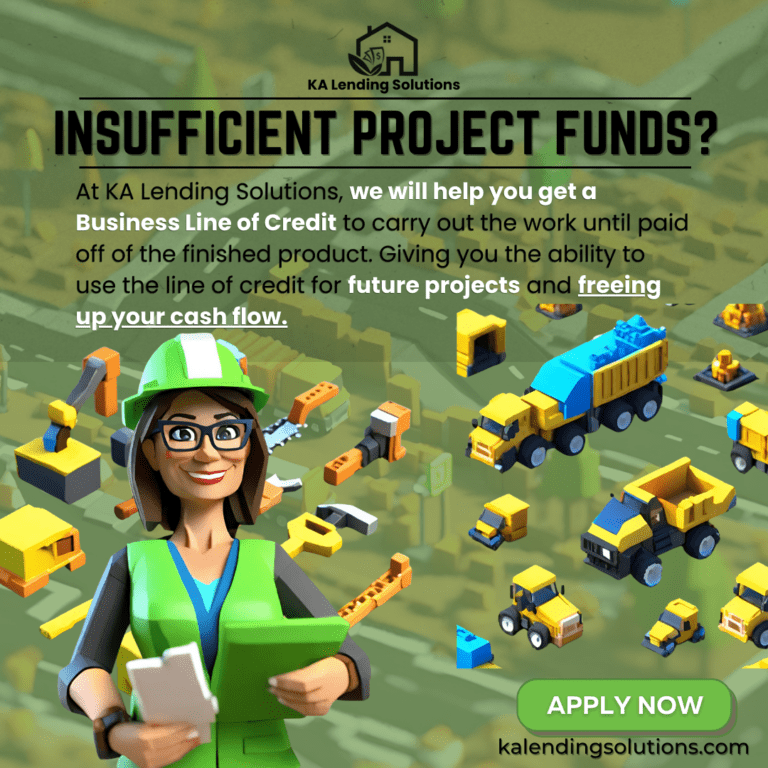Home Loans
caloundra, sunshine coast QLD
Home Loans, Refinance, Investment Loans and much more…All lending solutions

Your Local Experts in Home Loans and Mortgage Solutions
At KA Lending Solutions, we specialise in helping locals and newcomers buy a home in Caloundra and across the Sunshine Coast with confidence. Whether you’re a first-time buyer, upgrading to your dream home, or refinancing for a better deal, our role is to provide the best home loan options Sunshine Coast-wide — tailored to your goals and lifestyle.
Our Home Loan Services Include:
✔ First Home Owner Sunshine Coast
✔ Refinancing Options Caloundra
✔ Investment Loans Sunshine Coast and much more
Let's Chat
Home Loans
Our Products and Features Caloundra, Sunshine Coast
There are several types of home loans available to borrowers, each designed to meet different needs and financial situations. Here are some common types:
- Expert advice for home and business loans
- Flexible lending structures
- Tailored to your financial goals
- Step-by-step buying guidance
- Access to grants and schemes
- Finance that suits your goals
- Build wealth through property
- Structuring for tax efficiency
- Smart finance options
- Lower rates and save money
- Switch to a better lender
- Fast loan comparison
- Stage-by-stage funding
- Perfect for building your home
- Local support from start to finish
- Help family get into a home
- Flexible pledge options
- Guidance for all parties
- Alt doc and low doc options
- Support for entrepreneurs
- Flexible assessment criteria
- Funds for growth or operations
- Short- and long-term options
- Fast approval process
- For travel, weddings or expenses
- Fixed or variable rates
- Easy online application
- Finance for tools, equipment or fleets
- Tax-effective structures
- Quick turnaround
- Buy or refinance commercial property
- Tailored finance packages
- Expert local broker advice
- Buy property through your fund
- Fully compliant lending
- Specialist guidance
- Buy before you sell
- Short-term finance solutions
- Seamless property transition
- Perfect for freelancers or small biz
- Minimal paperwork needed
- Fast approvals
- Support with bad credit or complex cases
- Tailored approval strategies
- Wide lender panel
- Unlock funds using your property
- Ideal for projects or cash flow
- Flexible repayment terms
- Combine multiple debts
- Lower monthly repayments
- Take control of your finances
There are several types of home loans available to borrowers, each designed to meet different needs and financial situations. Here are some common types:
What’s Included in Home Loan Packages (Professional Packages)
- Discounted interest rates (tiered by loan size)
- Free Offset Accounts
- Credit Card (with or without rewards)
- Free Redraw Facility
- Access to multiple loan splits or sub-accounts
- Discounted insurance premiums (home, contents, income protection)
- Free property valuations (in some cases)
- Priority service or dedicated loan manager

Common Home Loan Features
These features can usually be selected or added depending on the type of loan and the lender:
Fixed Interest Rates
-
Interest rate is locked in for 1–5 years
-
Repayments stay the same = predictable budgeting
-
Often limits extra repayments (e.g. up to $10k/year)
Variable Interest Rates
-
Interest rate can rise or fall with the market
-
Flexible with unlimited extra repayments
-
Usually includes features like offset, redraw
Split Loan Options
-
Split between fixed and variable portions
-
Combines stability and flexibility
-
Great for clients unsure about rate changes
Offset Account
-
A savings or transaction account linked to your home loan
-
Reduces interest payable on your loan
-
100% offset preferred (full balance offsets interest)
Redraw Facility
-
Access any extra repayments you’ve made
-
Helpful for emergencies or funding renovations
-
May have limits or fees on redraws
Interest-Only Repayments
-
Pay interest only for a set period (e.g., 1–5 years)
-
Lower repayments upfront (common for investors)
-
Not reducing the loan principal during this period
Principal & Interest Repayments
- Standard repayment structure
- Reduces the loan balance over time
- Typically lower overall interest paid
Flexible Repayment Options
-
Choose from weekly, fortnightly, or monthly
-
Helps align repayments with income cycles
Loan Portability
-
Transfer your loan to a new property without closing the loan
-
Avoid break fees and simplify the moving process
Top-Up Facility
- Increase your loan amount after approval
- Access equity for renovations, car purchase, etc.
Rate Lock
-
Lock in your fixed rate at application
-
Protects against rate hikes before settlement (usually has a fee)
-
Secure a fixed rate before settlement for a fee.
-
Useful in a rising rate environment.
Guarantor Support
- Family member helps secure the loan with their home equity
- Can eliminate LMI and reduce deposit requirements
Lenders Mortgage Insurance (LMI) Waivers
-
Some professions (doctors, lawyers, accountants, etc.) may qualify for LMI-free borrowing up to 90–95%
Cashback Offers
- Some lenders offer cashback incentives for refinancing or new loans.
Online Account Access & Mobile App
- Manage your home loan and track repayments online or via app.
Green/Environmental Loan Features
-
Discounts or incentives for energy-efficient homes or upgrades.
Basic home loans offer a low-cost, no-frills option for first home buyers or owner-occupiers seeking a simple mortgage solution. Ideal for those purchasing a primary residence, these loans typically come with lower interest rates and fewer features. However, it’s essential to compare home loan options and assess your financial goals to ensure it’s the right fit.
Packages Ideal for:
- First Home Buyers – Combine with grants & low deposit loans
- Upgraders – Access equity or use bridging loans
- Refinancers – Reduce rates & consolidate features
- Investors – Interest-only, multiple property structuring
- Self-Employed Borrowers – Options like low-doc loans avail
Your Story = Lending Solutions
Whatever your situation maybe let's find a lending solution for you....
FAQ
Frequently Asked Questions
A home loan interest rate is the percentage that a lender charges on the principal (the amount borrowed) for using their money.
It determines how much interest you will pay over the life of your loan.
Interest rates can be fixed (remain the same for a set period or the loan term) or variable (fluctuate with market conditions).
The rate depends on various factors, including the central bank’s policy, lender’s risk assessment, your credit score, loan-to-value ratio, and current market conditions.
So my job is to help you find the best loan option for you for your situation.
Lets Chat
Home loan interest is usually calculated on a daily reducing balance basis. This means interest is charged on the remaining loan balance at the end of each day. As you make repayments, the principal reduces, and the interest is recalculated on the lower balance.
Formula for calculating daily interest:
For example, if your annual interest rate is 4% and your outstanding loan balance is $400,000, your daily interest would be:
Daily Interest=(4100)÷365×400,000=approx.
$43.84/day
Lets Chat
A home loan (or mortgage) is a loan you take from a bank or lender to purchase a property. Here’s how it works:
- You borrow a lump sum from the lender to buy a home, which you repay with interest over an agreed period, typically 15 to 30 years.
- The lender holds a lien on your property, which means they can take ownership if you fail to meet your repayment obligations.
- Each repayment is split into two parts: interest and principal. Early in the loan term, most of your repayment goes toward interest, while over time, more goes toward reducing the principal.
Lets Chat
To determine if you’re eligible for a home loan, lenders typically assess several factors:
- Income and Employment Stability: You need a stable and sufficient income to meet the repayment requirements.
- Credit Score: A high credit score increases your chances of approval and helps you secure better interest rates.
- Debt-to-Income Ratio (DTI): Lenders look at how much debt you have relative to your income. A lower DTI ratio (usually below 43%) is preferable.
- Loan-to-Value Ratio (LVR): This is the ratio of the loan amount to the value of the property. Lenders generally prefer an LVR below 80%.
- Deposit: Most lenders require a deposit, typically between 10-20% of the property value.
Lets Chat
When applying for a home loan, you will need the following documents:
- Proof of Identity: Passport, driver’s license, or national ID card.
- Proof of Income: Payslips for the last 3-6 months, employment contract, or bank statements showing salary deposits.
- Tax Returns: For self-employed borrowers or those with additional income sources.
- Bank Statements: Recent statements showing your savings and financial position.
- Credit Report: Your credit score and history, which the lender will often pull themselves.
- Proof of Assets: Documentation for any other assets you own, such as investments or properties.
- Property Details: If you’ve found a property, you’ll need the sale contract or property appraisal.
Lets Chat
The home loan application process typically involves the following steps:
- Research and Compare: Look for suitable lenders and compare interest rates, fees, and loan features.
- Pre-Approval: Apply for pre-approval, which gives you a rough idea of how much you can borrow. This doesn’t guarantee the loan but indicates your eligibility.
- Submit Application: Provide the necessary documents, including proof of income, identification, and details about the property.
- Loan Assessment: The lender assesses your creditworthiness and financial situation, including your income, credit score, and other financial obligations.
- Property Valuation: The lender may require a valuation of the property you intend to buy to ensure its worth matches the loan amount.
- Final Approval: If all requirements are met, the lender gives formal approval.
- Loan Agreement: Once approved, you sign the loan agreement, outlining terms, interest rates, and repayment schedule.
- Settlement: The loan is disbursed, and settlement on the property is completed.
Lets Chat
The time it takes for a home loan to be approved can vary depending on the lender and your financial situation. Generally, the process can take anywhere from 3 to 10 business days for initial approval if you have all the necessary documents ready.
- Pre-approval: 1-3 days.
- Formal Approval: 5-10 business days, or longer if complications arise (such as issues with property valuation or missing documentation).
Keep in mind, during peak property seasons or if your financial situation is complex, approval times may extend beyond these estimates.
Lets Chat
Using a mortgage broker they have your best interest and are able to work for you and not their own interests, mortgage brokers will have access to all and or many lenders and financial institutions and know their credit policies to suit your circumstances as not all lending products are the same. Using your local bank may not have a suitable product to meet you needs as each bank and lending solutions may only have a handful of products and will niche to certain criterias and industries for their products to match, your broker can match the right lender for you and or your situation and get you a better rate and in some cases a better discount.
Lets Chat




